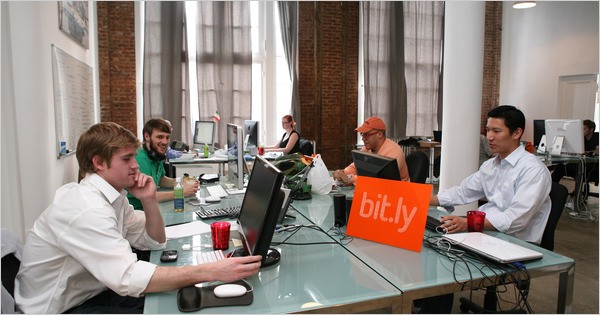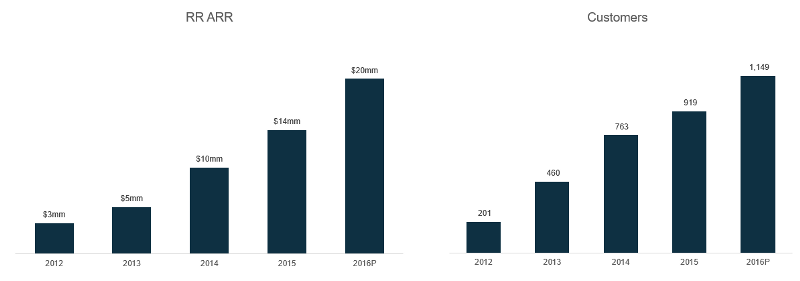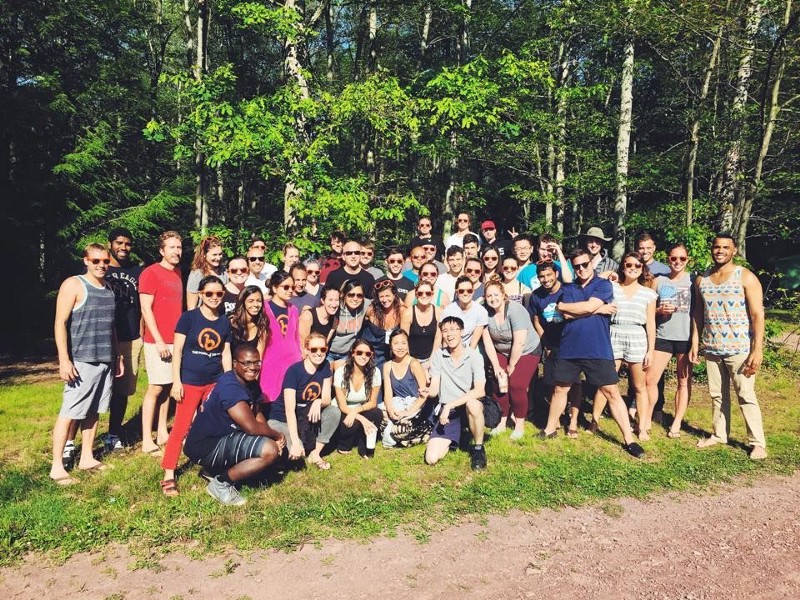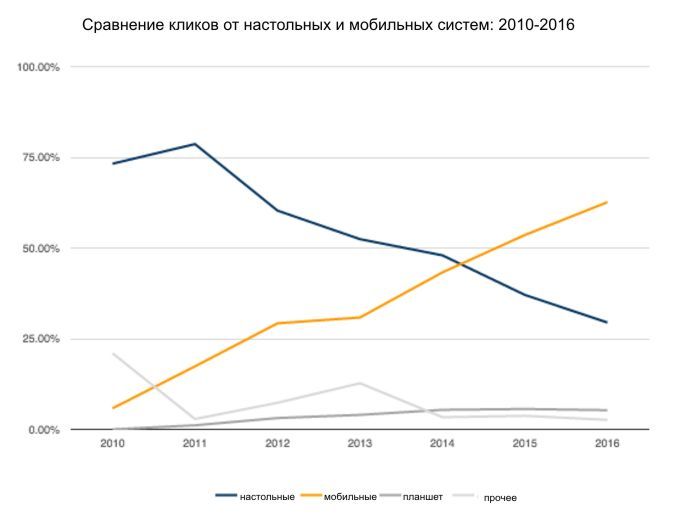The rise, fall and new rise of the service Bitly: how a free link shortening service has become a real business
It was 2011 year. Bitly was at a crossroads
In the previous three years, we have developed a comprehensive tool to shorten Internet links, processing millions of links per month and significantly more clicks. We grew up at a crazy pace.

We grew by $ 1.5 million during the initial investment in 2008 and another 2 million in Series A in 2009. We had ambitious growth plans for 2010 due to debt financing in the first half of the year and then at the expense of $ 10 million of funding from the B series in October; this was required mainly to support our expanding infrastructure during the overgrowth of our free product.
')
But - one problem. While we created a tool that almost everyone used, we actually did not build a stable business. In fact, we have not built the bulk of the business at all. We are stuck in the notorious trap of creating a user base and postponing worries about incomes. But it turned out to be a dangerous game - the money disappears quickly. In addition to this, Twitter introduced “t.co” (its own link shortening service), and the market was filled with competitors.
(Accidentally, one of the strategies we used to insure against possible obsolescence - providing branded short domains for free (for example, nyti.ms or pep.si), has become one of the most important parts of our business today. We currently hold over 60,000 such domains .)
In this transitional state, there were reorganizations in the company that forced us to replace our original team and artists several times when we were trying to determine the future of the Bitly service. We wanted to create a world where we could serve millions of our users in all countries, while building a stable business at the same time - and this is very difficult to balance. Having a small remaining venture capital, we were forced to assess our capabilities.
We tried several directions without success: “Bitly Pro” for bloggers and publishers, “Bitly TV” (yes, really) is a social news application that we call “news.me” and is now part of Digg.com, “Bitly for Feelings” (“Bitly for Emotions”) and an experiment in creating a data platform embedded in paid advertising platforms. But nothing has responded in the desired way (such is, alas, a play on words ...). We tried everything.
Direction Determination
By the time I joined at the end of 2013, our venture capital had already grown by the next 15 million dollars. Costs are still rising, but some hopeful signs have appeared.
When we had difficulty going through our further stages, having completed several unsuccessful start-ups along the way, the need to make a clear decision regarding the direction of our business became clear. We were going to create innovative consumer products? We had no shortage of first-class ideas. But when we looked at what we had, we realized that the answer was right in front of us all the time. We could help some of the largest brands and publishers using our product to increase the effectiveness of their links. Being engaged in the previous twenty years of my career in building a business that led marketers to success, I knew how rare the situation of having such a strong foundation is - direct relationships with a brand company.
A link is not just a way to transport consumers from point A to point B; it is a common bridge both within each marketing channel and between these channels. Marketers around the world have already used Bitly to make their links “under the brand” and shorten them; but more advanced marketers used our analytics to understand the passage of links through an ever-increasing and complicating array of channels, SMS for paid data collection, marketing of daily life through email.
We knew that we were in a unique position to solve the problem of multi-channel, which marketers are fighting over. We had some of the strongest analytics in the world when it came to links and content consumption, and there was a team of “tough guys” with the technical touch to create something wonderful. So we set about solving the problem.
In 2012, we introduced an enhanced version of Bitly, known today as Bitly Enterprise. However, it was only at the end of 2013 that we really made the final decision that this expanded version would become the core of our business.
The thing we have created
At the end of 2014, we launched a real minimally free SaaS service. The annual forecast revenue based on the current pace reached $ 10 million, the number of customers in the database exceeded 700, and the number of free users grew steadily.

In 2015, Bitly made a profit for the first time - this, I believe, will be an increasing criterion in its importance, especially in modern conditions. We moved to a larger office in the center of Silicon Alley and ended the year with 80 employees and annual forecast revenues based on the current rate of $ 14 million, moving into an important phase of $ 1 million of regular monthly income (MRR).
We also opened two additional offices (San Francisco, Denver) to expand our technical presence and improve customer service on the West Coast. And we added a few key links to our management team: Matt Thomson, Head of Information Privacy Services (CPO), Susan Rieskin, Vice President, Human Resources, and Andrew Dumont, Vice President, Marketing.

Now in 2016, we have more than 1,000 customers, and things are finally beginning to “respond” ... I am satisfied with what has been achieved.
You may still be asking yourself, but what, essentially, does our product do? I will be glad to answer.
Customers — from half the Fortune 100 list (Pepsi, General Electric, Samsung, etc.) to startups with fewer than 100 employees — turn to us to place their branded short domains, develop multi-channel analytics dashboards, create deep link functionality to improve mobile developments and restart applications, and more.
For 10 consecutive quarters, we had a net negative outflow, and gross profit was 85%. If I were on a stage right now, I would repeat it again and again, because I am proud of this result.
This shows us that our paid customers like what we do, and this is perhaps the most important characteristic of any SaaS business. However, we still have a long way to go.
If you first learned from this article that Bitly has a business model ... and some paid product ... as well as profitable customers, then you, unfortunately, are not alone. This is one of the reasons why we took the time to write an article, thus making an important step.
What is ahead ...
Our number one problem is balancing the construction of our free product with the development of a commercial product “Link Management Platform”, which, according to marketers, they need. For many of our customers, Bitly has become more than just a link shortening service for many years. For many other people, we are still the only place where our mascot-talisman is painted - a hedgehog fish named Chauncey MacPafferson.
We have no plans to get rid of Chauncey; we want to make Bitly in 2016 and beyond become not just a tool for shortening links and tracking clicks, but a link management platform that connects points between all channels in a marketing organization. The link is, indeed, a guideline.
To do this, we have completely updated our free and commercial products. This update will start with a new elegant user interface (see below), which will now be available to all new free accounts, and will be provided to everyone in the coming months.

We are also moving to a large extent in mobile devices, expanding our deep-link functionality so that brands can provide their users with easily integrated “application-application” practices that support application restarting and installation.

All this is aimed at our main goal: using link potential to optimize the client’s work. Thanks to the billions of clicks that Bitly processes each month, we can offer an unprecedented understanding of the path that each person goes through in consuming content - from what a person takes to the device on which he does it.
We believe in a future in which marketing can move from one-to-many communication to one-to-one communication; we are here in a unique position, which allows us to tackle this problem using our level of development. Every month, we process 15 billion clicks and about 6 billion one-way active cookies.
tl: dr
Bitly creates a foundation for a company that adds value to marketers, growing even more as it moves to mobile devices. What began as a short Twitter link turned into something much larger. We are committed to long-term demand, having a link as the core of our work. The commercial product we have been working on is finally being recognized, and our free product will become quite mature with the introduction of our newest version. If you have not heard a lot from us lately, this is not due to stagnation. We worked hard.
There has never been a more exciting time in the history of Bitly. We are a key component in how the world uses the Internet, and we are now more than ever sure that this is our mission that we will carry into the world for a long time.
(PS I read the article again before posting, and I honestly felt that it was not easy and did not leave a sense of impeccability. There are things that we are still not doing well enough, and some days are very difficult. But there are good days, nevertheless, more often than bad ones, and hard work is paying off.)
Source: https://habr.com/ru/post/299364/
All Articles